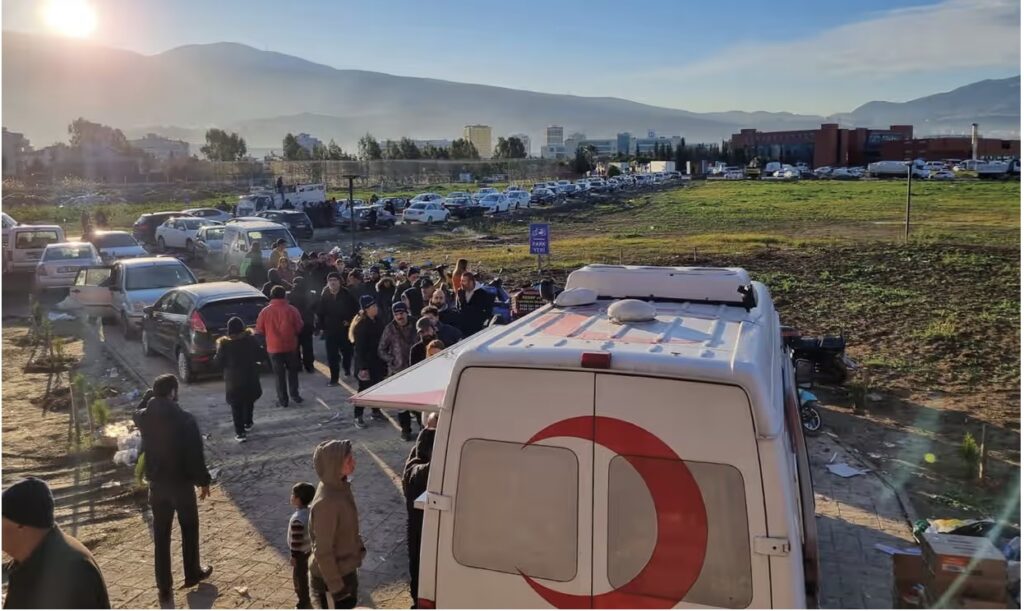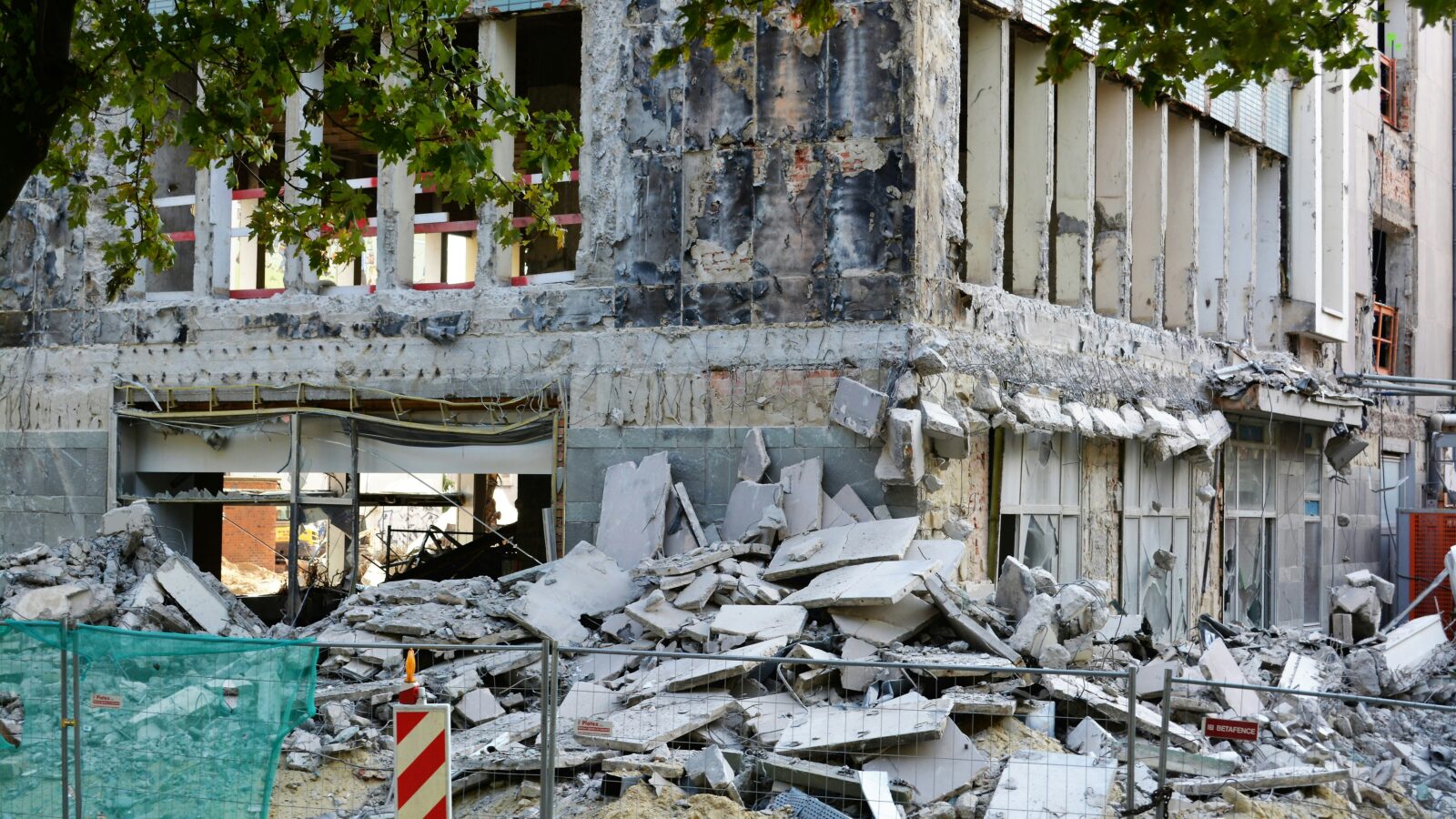
When Meltem Elmaci thinks back to the earthquakes that hit Turkey and Syria in February this year, one memory stands out. As she and her fellow Turkish Red Crescent volunteers handed out donated gift boxes to child survivors, they asked each child to describe their dream toy. One little girl, Ayşe, described the doll she wanted, using a stick to draw a picture of it on the ground. Opening the gift box, she saw a doll exactly as she’d imagined it – “from the colour of the skirt to the jewellery on her arm”, says Elmaci. No one could explain it, but the incident affected them deeply. “It made us all very happy to realise the dream of a child,” she says.
Moments such as these are cherished by volunteers when they find themselves surrounded by the destruction and misery caused by an earthquake. Now head of the Ankara branch, a voluntary role she carries out in addition to her job as a teacher, Elmaci has been involved with the Turkish Red Crescent almost all her life. As a child, she was a member of her primary school’s branch, collecting books and toys for children who needed them, but it was the sight of the Turkish Red Crescent vests at the 1999 Marmara earthquake that led to her joining as a volunteer. Her role now involves being ready, when disaster hits, to organise a volunteer response, bringing food, water, clothes, bedding, schooling and psychosocial support to those affected. “Wherever there is a need, we are there,” she says.
Elmaci was in Ankara, and still asleep, when she received a phone notification of the first earthquake in what was to be a series that hit both central Turkey and north-west Syria. They were among the worst in recent history, affecting a region the size of Germany and resulting in the deaths of almost 60,000 people across the two countries, as well as more than 100,000 injured. In Turkey, the UN estimated that more than 1.5 million people were left homeless in the immediate aftermath of the disaster.
When a disaster on this scale happens, Red Crescent and Red Cross societies, which operate in 192 countries, spring into action. The response is instant: Elmaci and her colleagues immediately set to work on the tasks set out in the Turkish government’s Disaster Response Plan, a document outlining the roles and responsibilities for every party involved in a disaster response. While professional search-and-rescue teams from around the world looked for people under the rubble, the Turkish Red Crescent volunteers set to work providing food and medical supplies to the thousands of people whose homes had been destroyed. The challenge was huge: not only did the earthquakes affect a large geographical area, it happened during a freezing cold winter.
Within hours, the Turkish Red Crescent volunteers were staffing mobile kitchens providing hot soup and drinks, and taking over kitchens in community centres and schools, so that they could produce three meals a day. They also provided essentials such as temporary accommodation, bedding and nappies: in all, the teams distributed more than 134,000 tents, 57,659 heaters and 574,867 blankets as well as 416m hot meals. Many of the volunteers were from the affected areas – and despite having to live in tents and container camps, and in some cases having lost family members, they still joined the relief effort.
The British Red Cross has a global surge team, a small number of paid staff who stay in an affected region for up to three months, and whose job is to coordinate the response from the international teams. Julia Brothwell, a member of the global surge team who arrived in Ankara after the earthquakes, says her role involved making sure that teams arriving in the region “understood who to report into, where to get briefings and where they could operate”.
In the early days, the search-and-rescue teams worked around the clock. There is a limited time period of up to 14 days, Brothwell says, in which it’s possible to find people still alive. Elmaci says there was “great solidarity”, as people worked together: “Our volunteer teams were running to help professional teams wherever we heard voices.”
Once the search-and-rescue teams have left, the volunteer response continues. When an earthquake flattens a town every aspect of life is affected, which is why the Turkish Red Crescent volunteer responders include doctors, electricians, plumbers, bakers, cooks, barbers, psychologists and engineers, all offering support to displaced people. While the initial focus of the volunteers was on providing food, shelter and medicine, they later began delivering “all the needs that came to mind, from nail clippers to hair combs”, says Elmaci.
Devastating as it is to see towns and villages destroyed by an earthquake, the Red Cross and Red Crescent know that their work has long-term value. Brothwell was part of a delegation that worked with the Turkish Red Crescent to set up a regional disaster response system after the 1999 earthquake. Returning nearly 20 years later, she was able to see “a direct thread” from that project to the current efficient and speedy response system.
Elmaci has another treasured memory from the latest earthquake. One day, travelling with colleagues to the disaster area, they heard a cry for help. A pregnant woman had gone into labour. Elmaci was able to use her first aid training to help deliver the baby, and stay with the family until the paramedics arrived. The parents told her they would name the long-awaited baby after her. And then, says Elmaci, it was time to move on: “The weather was very cold, and we had to get to another area. We set off again to distribute blankets and heaters.”
Thanks to the efforts of thousands of people, life in the area impacted by the earthquakes is returning to normal, says Elmaci. “I think we have done an important job as a country. We gave all the support we could to our earthquake victims.” But, she adds: “People still have a number of human needs – and we continue to meet those needs.”
This paid content article was first published in the Guardian.

